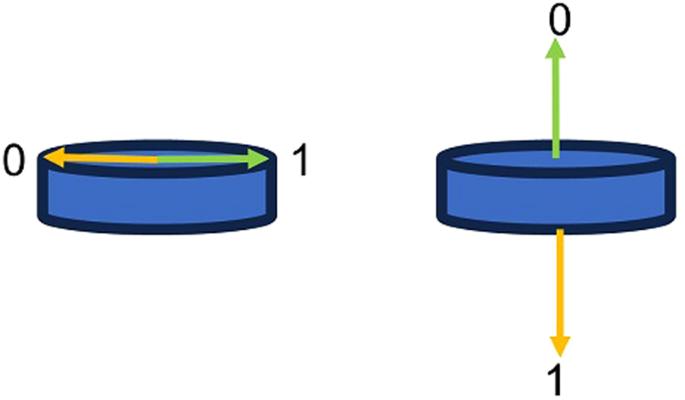Perspective: There is plenty of room for magnetic straintronics in the analog domain
引用次数: 0
Abstract
Magnetic straintronics made its debut more than a decade ago as an extremely energy-efficient paradigm for implementing a digital switch for digital information processing. The switch consists of a slightly elliptical nano-sized magnetostrictive disk in elastic contact with a poled ultrathin piezoelectric layer (forming a two-phase multiferroic system). Because of the elliptical shape, the nanomagnet’s magnetization has two stable (mutually antiparallel) orientations along the major axis, which can encode the binary bits 0 and 1. A voltage pulse of sub-ns duration and amplitude few to few tens of mV applied across the piezoelectric generates enough strain in the nanomagnet to switch its magnetization from one stable state to the other by virtue of the inverse magnetostriction (or Villari) effect, with an energy expenditure that is roughly an order of magnitude smaller than what it takes to switch a modern-day electronic transistor. That possibility, along with the fact that such a switch is non-volatile unlike the conventional transistor, generated significant excitement. However, it was later tempered by the realization that straintronic switching is also extremely error-prone, which may preclude many digital applications, particularly in Boolean logic. In this perspective, we offer the view that there is plenty of room for magnetic straintronics in the analog domain, which is much more forgiving of switching errors, and where the excellent energy-efficiency and non-volatility are a boon. Analog straintronics can have intriguing applications in many areas, such as a new genre of aggressively miniaturized electromagnetic antennas that defy the Harrington limits on the gain and radiation efficiency of conventional antennas, analog arithmetic multipliers (and ultimately vector matrix multipliers) for non-volatile deep learning networks with very small footprint and excellent energy-efficiency, and relatively high-power microwave oscillators with output frequency in the X-band. When combined with spintronics, analog straintronics can also implement a new type of spin field effect transistor employing quantum materials such as topological insulators, and they have unusual transfer characteristics which can be exploited for analog tasks such as frequency multiplication using just a single transistor. All this hints at a world of new possibilities in the analog domain that deserves serious attention.

视角:磁应变技术在模拟领域大有可为
十多年前,磁致伸缩技术作为一种极其节能的范例首次亮相,用于实现数字信息处理的数字开关。这种开关由一个略呈椭圆形的纳米级磁致伸缩盘与一个极化超薄压电层(形成两相多铁系统)弹性接触组成。由于是椭圆形,纳米磁体的磁化沿主轴有两个稳定(相互反平行)的方向,可以编码二进制位 0 和 1。在压电体上施加一个持续时间为亚纳秒、振幅为几毫伏到几十毫伏的电压脉冲,就能在纳米磁体中产生足够的应变,从而通过反向磁致伸缩(或维拉里)效应将磁化从一种稳定状态切换到另一种稳定状态,其能量消耗大约比现代电子晶体管的开关能量消耗小一个数量级。这种可能性,加上这种开关与传统晶体管不同,是非易失性的,引起了极大的轰动。然而,后来人们意识到应变电子开关也极易出错,这可能会排除许多数字应用,尤其是布尔逻辑应用,从而使人们的兴奋劲有所减弱。从这个角度来看,我们认为磁应变电子学在模拟领域还有很大的发展空间,因为模拟领域对开关误差的容忍度要高得多,而且卓越的能效和非波动性也是一大优势。模拟应变电子学在许多领域都有引人入胜的应用,例如,一种新型的极度微型化电磁天线,它打破了哈灵顿对传统天线增益和辐射效率的限制;用于非易失性深度学习网络的模拟算术乘法器(以及最终的矢量矩阵乘法器),具有极小的占地面积和出色的能效;以及输出频率在 X 波段的相对高功率微波振荡器。当与自旋电子学相结合时,模拟应变电子学还能利用量子材料(如拓扑绝缘体)实现一种新型自旋场效应晶体管,它们具有不同寻常的传输特性,可以仅利用单个晶体管来完成频率倍增等模拟任务。所有这些都预示着模拟领域将出现新的可能性,值得我们认真关注。
本文章由计算机程序翻译,如有差异,请以英文原文为准。
求助全文
约1分钟内获得全文
求助全文

 求助内容:
求助内容: 应助结果提醒方式:
应助结果提醒方式:


